As climate change and its large-scale negative effects are no longer just presumptions but a reality we are all facing on a daily basis, every member of society, including those in the business environment, must behave and do business in a more sustainable way. Business Review talked to representatives of large companies in Romania and highlighted several solutions that can ensure a greener and safer future for the coming generations. Implementing sustainable urban development, water management, and farming, supporting businesses with green finance, and finding ways to lower carbon emissions in all our activities are among the actions that could be part of the solution.
By Anda Sebesi
While Romania has taken steps towards developing a national sustainable development agenda, the country’s transition to a green economy is still being hindered by a number of factors, including a lack of policy vision, an ineffective legislative framework, and low levels of public investments. At the same time, there’s been a gratifying increase in environmental awareness and concern among all stakeholders. “Our customers’ interest in these issues, be they companies or individuals, has increased constantly over the past few years,” says Alexandra Maier, sustainability manager at ING Bank Romania.
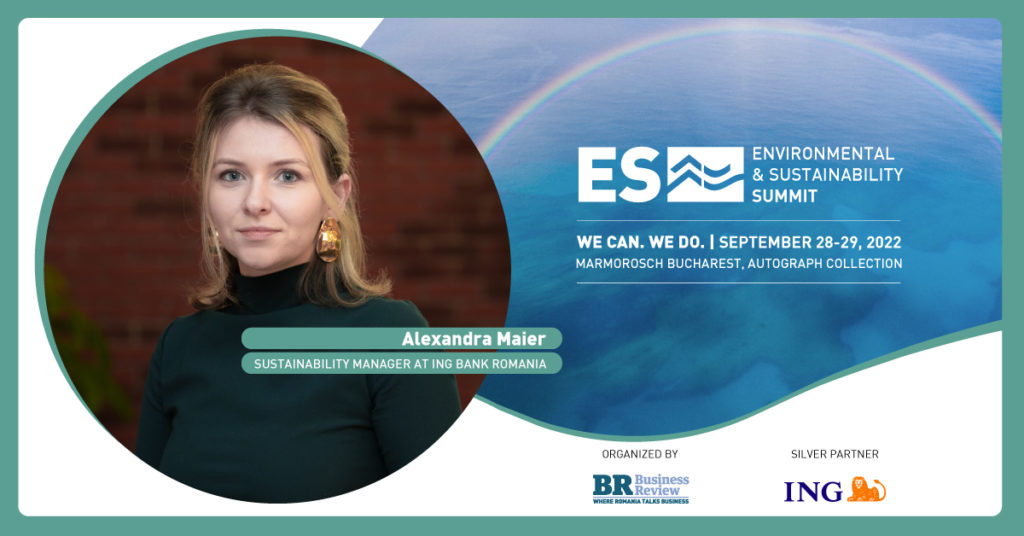
In 2021, ING conducted a study among 450 companies in seven business sectors and 100 institutional investors from three continents which found out that 72 percent of investors are very interested in green project portfolios and want more transparency from companies about their sustainability goals. “We can therefore say that the appetite is there, at least among large companies. At the same time, when it comes to local entrepreneurs and SMEs, we need to raise awareness of the opportunities they have and, implicitly, of the benefits they can access by switching to more environmentally friendly solutions,” Maier adds.
Join us on September 28-29 at The Marmorosch Bucharest, Autograph Collection (Doamnei St. 2, Bucharest) for Business Review’s Environmental & Sustainability Summit, the only two-day summit of its kind in Romania, and take an inside look at what the top speaking guests have to say about creating a new normality through sustainable means. Only together we can keep our future safe!
The current draft version of Romania’s Circular Economy Strategy proposes various solutions aiming to achieve sustainable urban development at the national level, prioritising certain sectors like automotive, construction, packaging or EEE. Among others, such solutions focus on decreasing consumption of raw materials by using more secondary raw materials, applying innovative eco-friendly technologies and processes, promoting digitalization, and improving the waste management system and infrastructure. The latter also includes increasing landfill prices to make landfilling less attractive and enhance treatment and recovery options that are higher up in the waste hierarchy.
Currently, the deposit return system for single-use primary packaging (DRS) is one of the major initiatives being implemented that could greatly enhance waste management performance in Romania. “However, the success of the DRS depends heavily on each stakeholder—public sector, private sector, and consumers—fulfilling their individual obligations to meet the ambitious return targets for such packaging. Other initiatives, such as digital waste islands under the National Recovery and Resilience Plans and Pay-As-You-Throw mechanisms, should also contribute to eco-friendly urban life,” says Roxana Ionescu, Partner and Head of the Environment Practice at NNDKP. In such a difficult context, what should Romania do to better cope with the very real effects of climate change?
Pursuing sustainable urban development
With around 75 percent of Europe’s population living in urban areas today—and estimates predicting that the figure will rise to 80 percent by 2050—making our urban environments more sustainable is no longer just a nice idea, but a vital task. As a concept, urban environmental sustainability encourages the revitalisation and transition of urban areas and cities to improve liveability, promote innovation, and reduce environmental impact while maximising economic and social co-benefits.
Real estate developers play a crucial role in designing and developing sustainable cities. For example, in 2021, One United Properties made significant steps in terms of sustainability commitment by continuing to focus on responsible construction where a majority of the waste is diverted, investing in its first restoration of a historical landmark, starting a partnership with Veolia to implement the latest renewable energy solutions for residential developments, making a commitment that new office developments will meet the net zero carbon emissions standard, elaborating a new Code of Conduct for its suppliers, and laying the foundations for the first ESG Committee of a Romanian public blue chip company.
“The One United Properties environmental strategy includes the development of a 100 percent Green Homes certified residential portfolio, a 100 percent LEED and WELL-certified office portfolio, as well as a pledge that all new office developments will meet the LEED Zero Carbon standards. During the construction phases, approximately 65 percent of the waste that was generated on the nine construction sites on which One United Properties worked in 2021 was diverted—reused, recycled or repurposed—instead of being buried in the landfill,” says Beatrice Dumitrascu, the CEO of the Residential Division at One United Properties.
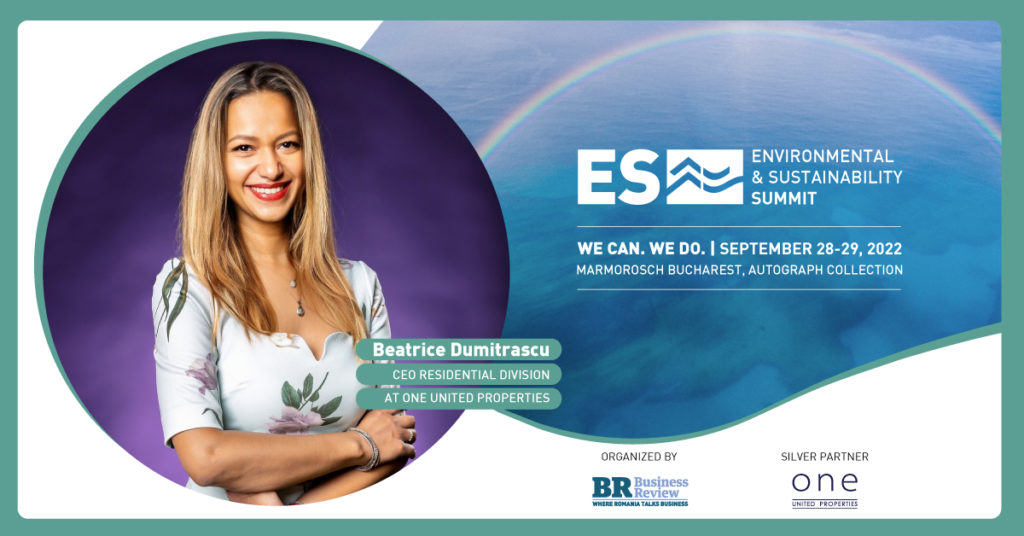
According to Marius Dumitrescu, National Civil Buildings Solutions and Promotions Manager at Holcim, decarbonising the built environment is essential for a net-zero future. Thus, to achieve the climate transition, the EU has put forward sets of policies (Council of the European Union, 2022b), including the European Green Deal and the ‘Fit for 55’ package, which addresses the legislation and measures needed to achieve climate targets by 2030, among other existing and emerging policies. Romania supports all these efforts.
“Decarbonising the built environment is essential for a net-zero future and to limit the effects of global warming. Nearly 40% of the world’s CO2 emissions are linked to the way we construct and operate buildings. 30% of this footprint occurs in the construction phase. We in the construction industry have a great responsibility towards society and future generations. Concrete is the most widely used man-made material because of its extraordinary characteristics and we as part of the construction industry are aware of the responsibility we have.” Says Marius Dumitrescu.
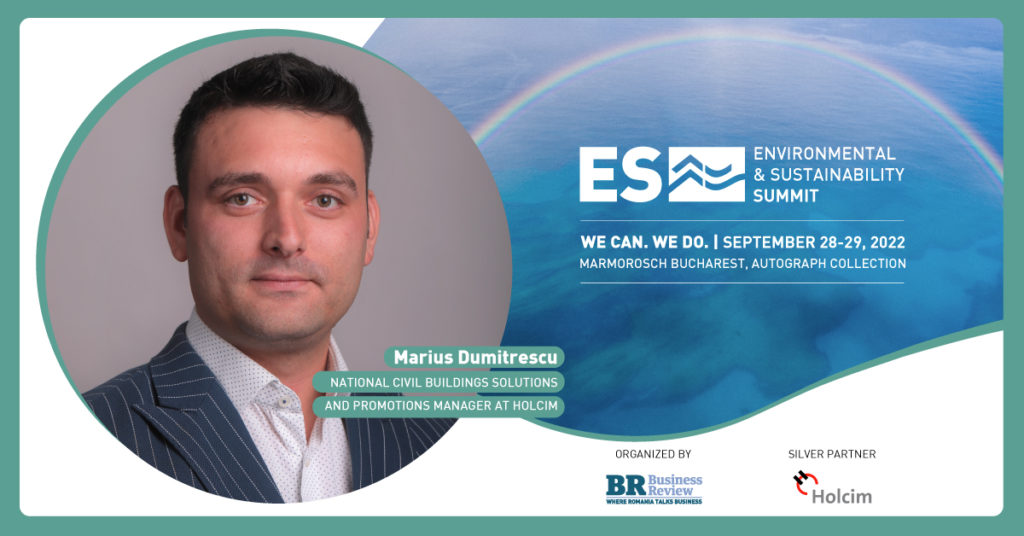
Supporting businesses with green finance
Green finance represents investment flowing into sustainable projects and initiatives that encourage a more environmentally friendly and socially conscious economy. There have been significant advancements in sustainable investments over the last decade, both in Romania and abroad, so an increasingly number of lenders have added financial products that incorporate sustainability factors into their portfolios.
“For us, as a financial institution, green finance is a holistic approach that covers three areas of environmental sustainability: how we impact the environment through our own internal processes, how we assess and manage environmental risk when lending to our customers, and the types of green-focused loans we offer. Our portfolio in green finance comprises energy efficiency loans, renewable energy loans, and friendly environmental loans,” says Stefan Manole, the CEO of ProCredit Bank. As of June 2022, the lender’s portfolio of green loans exceeded EUR 80 million, representing a share of more than 20 percent of its loan portfolio.

Another example comes from ING Bank Romania, whose focus is where it can have the biggest impact in terms of supporting a transition to a green economy through its lending portfolio: sustainable finance. “This transition is about finding the balance between the need to keep the business moving and implementing changes to achieve its sustainability ambitions. We’ve financed and will continue supporting green energy projects through green loans and bonds, sustainability-linked products, other innovative products, and construction loans—and meanwhile, we’ll lead by example and constantly improve the impact of our own operations,” says Alexandra Maier.
Last but not least, Garanti BBVA is another bank that has made constant efforts into greening up its credit portfolio by continuously innovating its product range to mobilise capital for fighting climate change and driving sustainable development. Recent examples of green products are the Casa Eco green mortgage loan and the green loans for residential developers which are certified by the Romania Building Council. “We are always interested in financing projects that aim to support the green transition such as renewables, energy efficiency, clean transportation, ecological agriculture, prevention and control of pollution, circular economy, etc. Our banking offer is complemented by a wide range of green consumer finance products for electric vehicles, solar panels or other energy efficient heating solutions,” says Mustafa Tiftikcioğlu, the CEO of Garanti BBVA.

Along similar lines, Manole of ProCredit Bank says that recently, there has been increased demand for photovoltaic power plants for electricity production, both for personal use and for sale on the Open Electricity Market. When it comes to photovoltaics, ProCredit has accumulated significant experience in financing such investments and has specialised staff that understands the technology very well. “Practice has proved that companies with available roof space that use a lot of electricity on a daily basis—such as all types of production plants and service or trade operations—are suitable for this type of investment. The financial effect of the investment is extremely favourable and the return takes between 5-7 years. Therefore, over the past few years, we’ve been promoting the idea of investing in photovoltaics for own use and highlighting their economic and environmental benefits.”
Sustainable water management
Water is the main ingredient in Coca-Cola System’s drinks, so access to water is fundamental for its production activity as well as a vital resource for the communities in which it operates. Therefore, managing water sustainably and reducing consumption are two major focus areas for the Coca-Cola System.
“We carefully monitor our water consumption, and our strategy sets clear targets for cutting consumption levels and treating wastewater from our production processes. One of the key sustainability performance indicators related to water consumption is the water usage ratio, which means the quantity of water we use to produce 1 litre of beverage,” says Adina Tudor, Customer Sustainability Partnerships Manager at Coca-Cola HBC Romania. She notes that in 2021, the company’s water usage ratio was down 6.34 percent compared to 2017. “This boosts our plans to increase the efficiency of water usage by investing in technologies that allow water to be recycled and recovered and reintroduced into the production circuit, where the technological process allows it.” In addition, all the company’s local plants are certified by the Alliance for Water Stewardship. The Poiana Negri water plant holds the highest standard—Platinum—while the plants in Ploiesti and Timisoara are in the process of transitioning from Gold to Platinum. “We are the only beverage producer in Romania to hold this certification,” Tudor points out.

As for the company’s global vision, Mihaela Nita, Public Affairs Manager at Coca-Cola Romania, says that its goal is “Water leadership,” a vision that reflects the overall importance of water: not just for its line of business, but for its communities as well. “Our entire global strategy was built to support this vision, through water management efficiency initiatives in our operations, watershed improvements through stewardship plans, and programmes for the enhancement of water resilience in the communities in which we operate,” Nita notes.
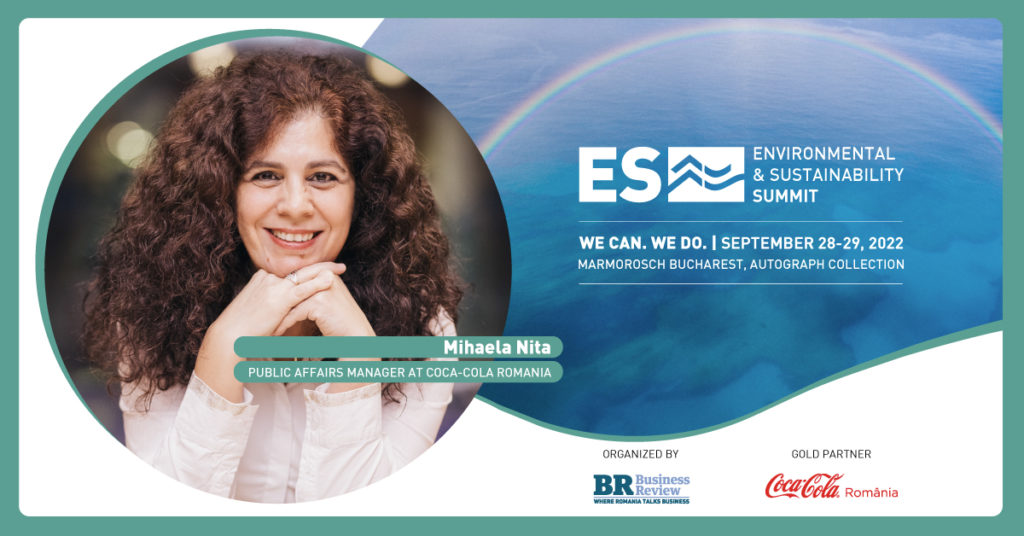
Furthermore, over a decade ago, the company set out to return to communities 100 percent of the equivalent of water being used in the production of its drinks. “We achieved this goal 5 years ahead of schedule, and in each of the past seven years we have exceeded this target, achieving a positive water footprint,” she adds.
In Europe, Coca-Cola supports a large-scale wetland restoration programme along the Danube and its tributaries, in six countries: Austria, Hungary, Croatia, Serbia, Bulgaria, and Romania. For example, “Together for a Living Danube” is a unique, cross-sectoral partnership between WWF-CEE, the Coca-Cola Foundation, and the International Commission for the Protection of the Danube River (ICPDR). With an eight-year history, the partnership has so far led to the restoration of wetlands and floodplains on an area of 5,462 hectares—the equivalent of more than 7,422 football fields. The ecological reconstruction works carried out in these six countries have increased the storage capacity of the Danube meadow by more than 13 million cubic meters—an amount that would fill more than 4,800 Olympic pools.
“In Romania, ecological reconstruction took place in Garla Mare-Vrata, in Mehedinti county, and the most important reconstruction phase was completed in 2021. These works have made it possible to reconnect the Danube to its floodplain and they have the potential to store over 5 million cubic metres of water during Danube floods. More than 400 hectares of meadow have been returned to nature following the restoration. The project contributes to restoring the area’s biodiversity, with already visible effects, and it creates opportunities for socio-economic development,” the Coca-Cola Romania representative explains.
For IKEA Romania, reducing water and energy consumption, preventing food waste and improving air quality at home, thus creating a healthy and sustainable life has become paramount in recent years. “For us at IKEA, creating a better everyday life for everyone is at the heart of everything we do. We want to have a positive impact on the communities where we operate, and this translated into caring for people and planet altogether. We aim to use the Earth’s resources responsibly, to substantially reduce greenhouse gas emissions and to improve the quality of life for as many people as possible by offering affordable sustainable furnishing options.” Says Violeta Neniță, Market Manager at IKEA Romania.
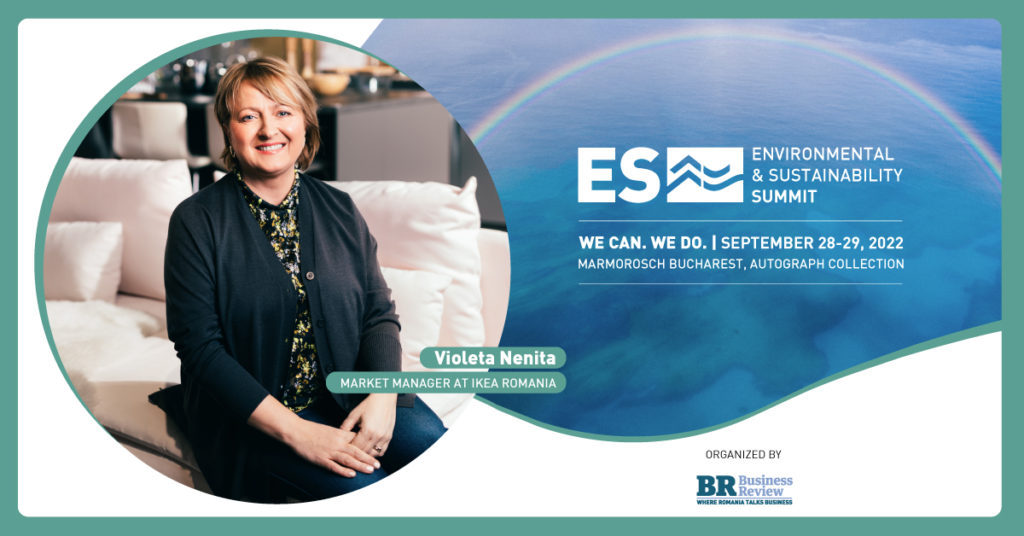
Sustainable agriculture
Global estimations show that our planet should supply food for a population of 10 billion by 2050, which implies a much greater need for water. “Using water in a more sustainable way along with cultivating more crops per each drop of water is the global challenge we need to address. Technology and agricultural practices adapted to this situation could be part of the solution,” says Ana Gheorghiu, public affairs, science & sustainability lead for Romania, Bulgaria, and the Republic of Moldova at Bayer.
Identifying agronomical solutions to address climate change and to have a greater impact is at the core of the local sustainability strategy of Bayer’s Crop Science division. “We try to offer farmers a mix of tools they need to practice good water management—whether we’re talking about precision farming, draught- and pest-resistant hybrids or new plant protection products that are more environmentally friendly—all of which leads to a lower consumption of water and energy and the use of less workforce. We want to increase farmers’ profitability and performance and help them use fewer resources, enable them to protect the environment—water, land, and biodiversity—, and prove that agriculture is part of the solution to the big global challenges we’re all facing,” Gheorghiu adds. At its manufacturing and processing facility in Sinesti, Ialomita, the company implements specific technologies and methods to cut water use in cultivation.

Decarbonising our way of life
The world’s scientists are clearly in agreement: if we wanted to have any hope of preventing the most catastrophic effects of climate change, we must now embrace significant lifestyle changes in order to decarbonise our daily activities.
“Road freight today accounts for about seven percent of the world’s CO2 emissions, and around half of this comes from heavy truck transport: our business. As one of the world’s largest truck manufacturers, we are clearly part of the problem. But we are also fully determined to be part of the solution. Our immediate aim is for at least 50 percent of all the trucks we sell to be electric by 2030. And by 2040—at the very latest—we will have decarbonised our entire truck range,” says Per Forsberg, managing director at Volvo Trucks Romania.
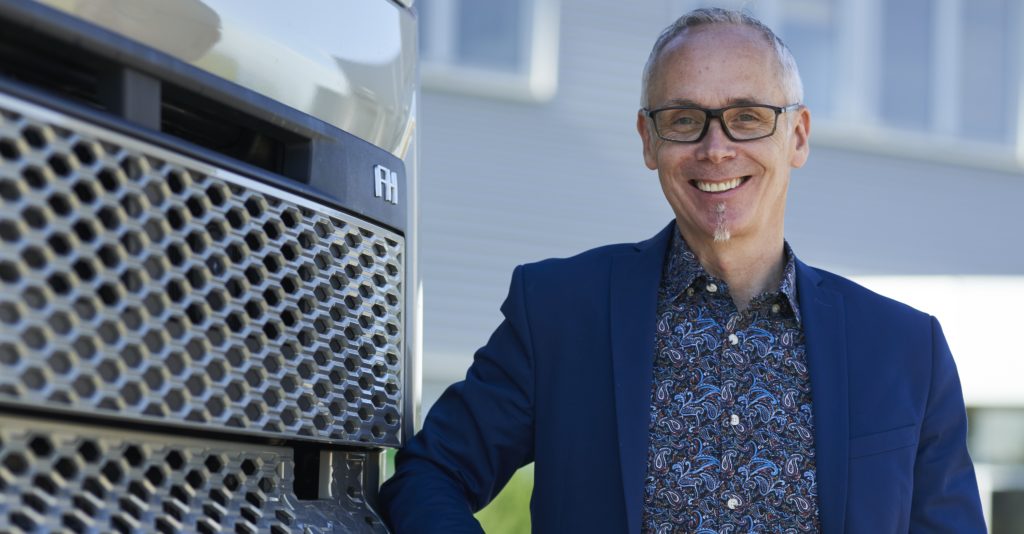
Volvo Trucks started its production of fully electric trucks as early as 2019 and they now offer the world’s widest range of heavy-duty electric trucks. In fact, a large share of heavy goods trucks travel less than 300 km a day. “In Europe for example, such relatively short distance transports of under 300 km account for almost 50 percent of the total goods transported. This basically means that goods transports in many cases could be done with battery-electric trucks which are already available today.” But what is still stopping transport companies from going electric? “Two things: the need to improve the total cost of ownership and the need for adequate charging infrastructure,” Forsberg explains. In his view, governments, authorities, and other policy makers need to speed up their actions to kick-start electric trucking—and make the transition as easy and viable as possible. “They need to provide effective incentives and catalysts that will lower economic barriers for the initial purchases of electric trucks; reduce or even eliminate road and energy taxes for such trucks; and intelligently encourage private infrastructure investments in charging stations in strategic locations,” he concludes.
Areas where legislation needs to be updated to accommodate sustainable initiatives
- Single use plastics principles and rules have yet to be fully implemented, one year after the transposition of the Single Use Plastics Directive. “In practice, the national provisions on single-use plastics appear to be inconsistently interpreted by various players in the industry. Hence, adopting subsequent methodological norms should clarify existing discrepancies, e.g., by offering final consumers a choice of reusable, suitable, and sustainable or plastic-free alternatives at the point of sale,” says Miruna Vlad, Senior Associate in the Environment Practice at NNDKP.
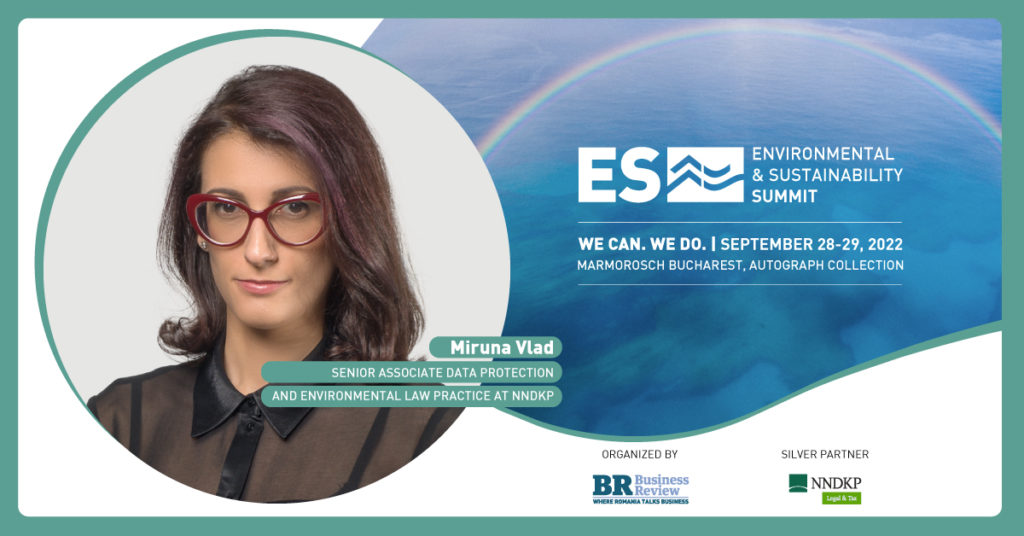
- The digitalization of public services could have the indirect effect of reducing emissions. “Digital transformation is one of the components of the National Recovery and Resilience Plan, which encompasses objectives targeting several public services that are currently undergoing different stages of digitalization. Once this component is completed successfully, there may be an indirect environmental effect of reduced emissions as people will be able to avoid making multiple trips to institutions,” Vlad notes.
- Eco-design is an objective in multiple industries, including the automotive sector. “The EU’s Circular Economy Action Plan seeks to extend the current eco-design framework beyond energy-related products to other product groups, such as electronics, ICT, textiles, furniture, steel, cement, and chemicals. Meanwhile, the national strategy also focuses on implementing eco-design in the construction, plastics, and automotive sectors,” Vlad adds.
- Recycling options have yet to be scaled up to meet the growing needs of urban developments and other projects. “Recycling-related matters requiring adjustments to meet new sustainability goals include developing new recycling facilities and digitalized ecological islands or Pay-As-You-Throw solutions, adopting regulations on end-of-waste criteria, and adapting the waste traceability system. Deploying such measures requires clearly defined and segmented responsibilities at the individual level, complemented by well-aligned enforcement elements,” says Roxana Ionescu, Partner and Head of the Environment Practice at NNDKP.


:quality(80)/business-review.eu/wp-content/uploads/2022/09/LOCATIE-SM_marmoroch.jpg)

:quality(80)/business-review.eu/wp-content/uploads/2024/07/BEI.jpg)



:quality(80)/business-review.eu/wp-content/uploads/2024/06/22C0420_006.jpg)

:quality(80)/business-review.eu/wp-content/uploads/2024/06/COVER-1-4.jpg)



:quality(50)/business-review.eu/wp-content/uploads/2021/02/Pirelli.jpg)
:quality(50)/business-review.eu/wp-content/uploads/2024/02/Gelu-Gherghescu.jpg)
:quality(50)/business-review.eu/wp-content/uploads/2023/10/Small_NEAN0333.jpg)
:quality(80)/business-review.eu/wp-content/uploads/2024/06/br-june-2.jpg)
:quality(50)/business-review.eu/wp-content/uploads/2024/07/VGP-Park-Timisoara_-8thbuilding_iulie-24.jpg)
:quality(50)/business-review.eu/wp-content/uploads/2024/07/America-House-Offices-Bucharest-Fortim-Trusted-Advisors.jpg)
:quality(50)/business-review.eu/wp-content/uploads/2024/07/BeFunky-collage-33-scaled.jpg)